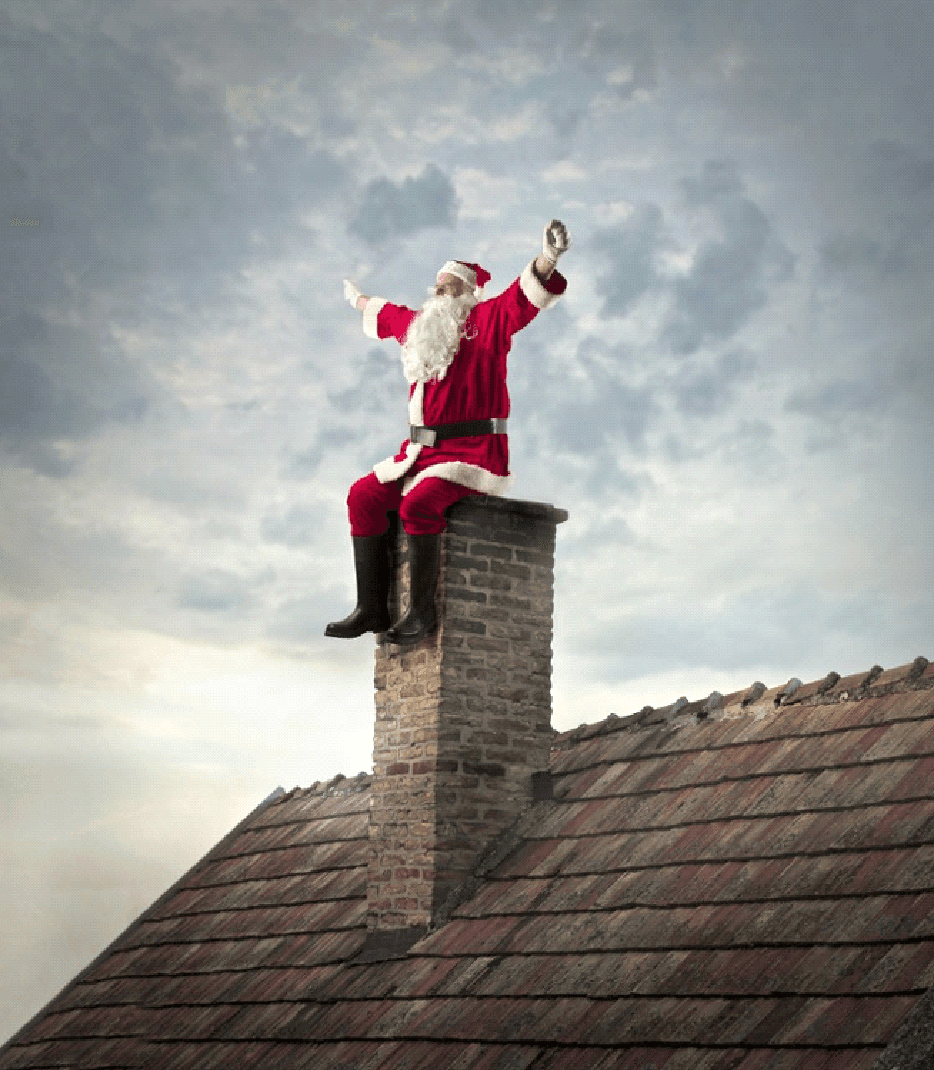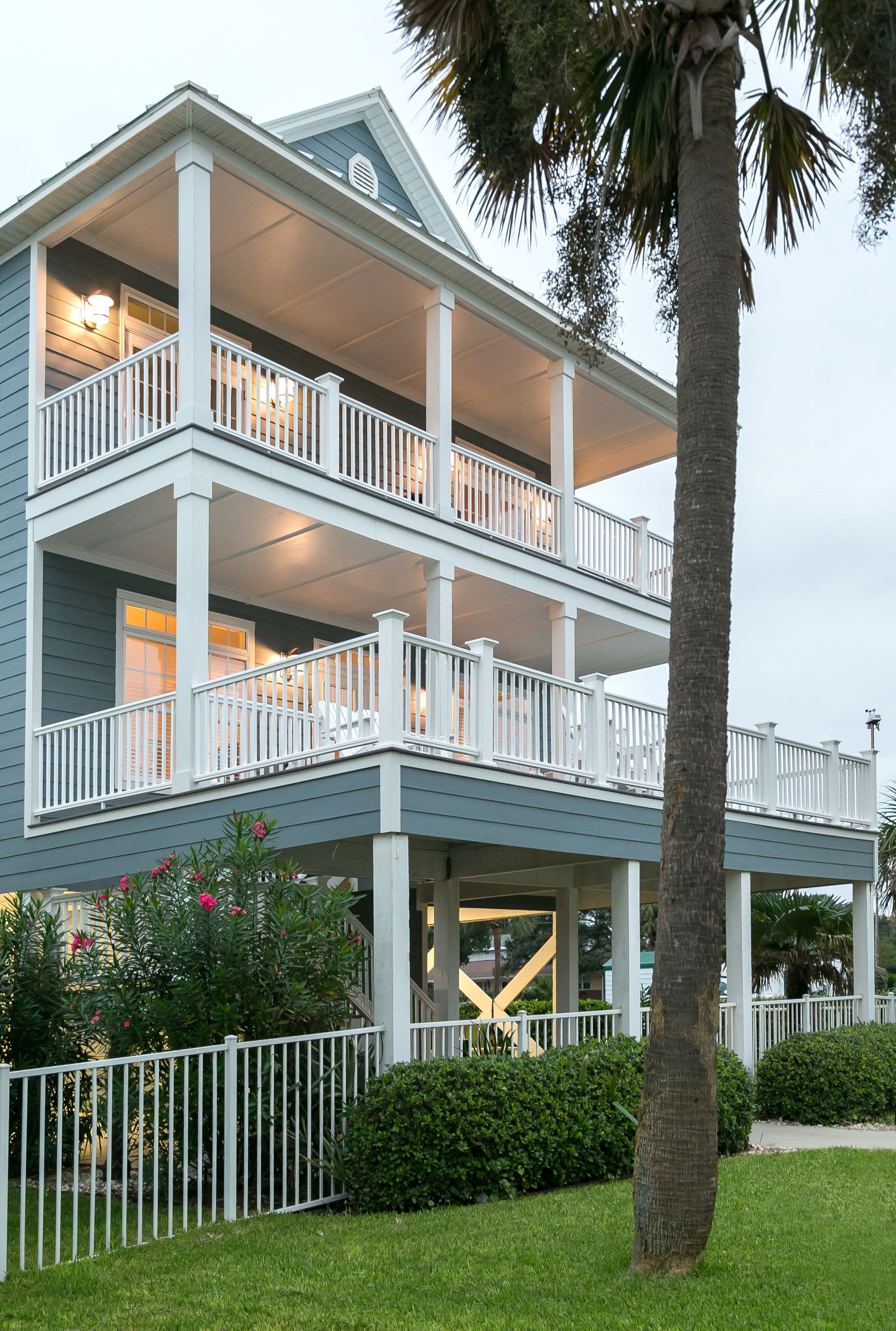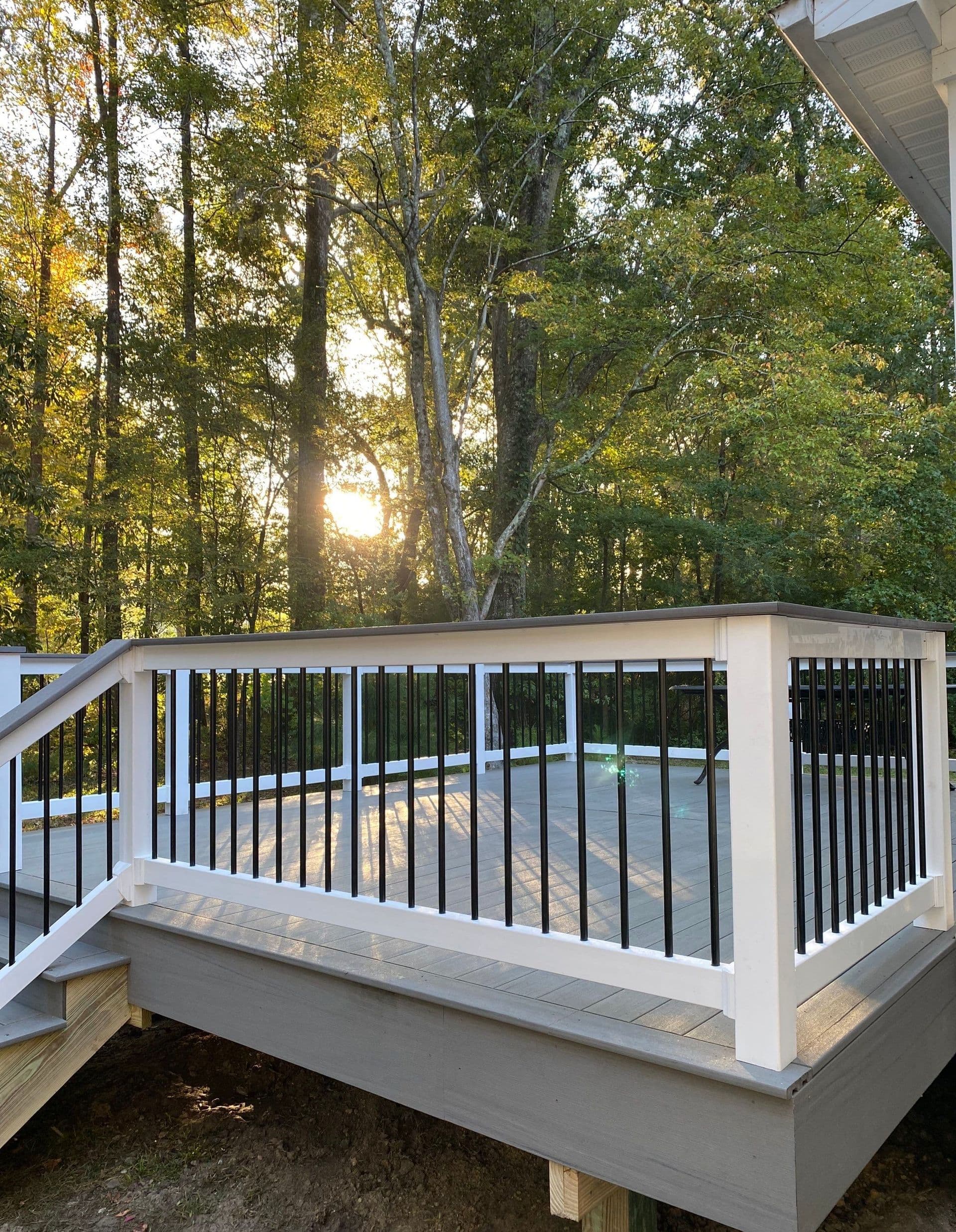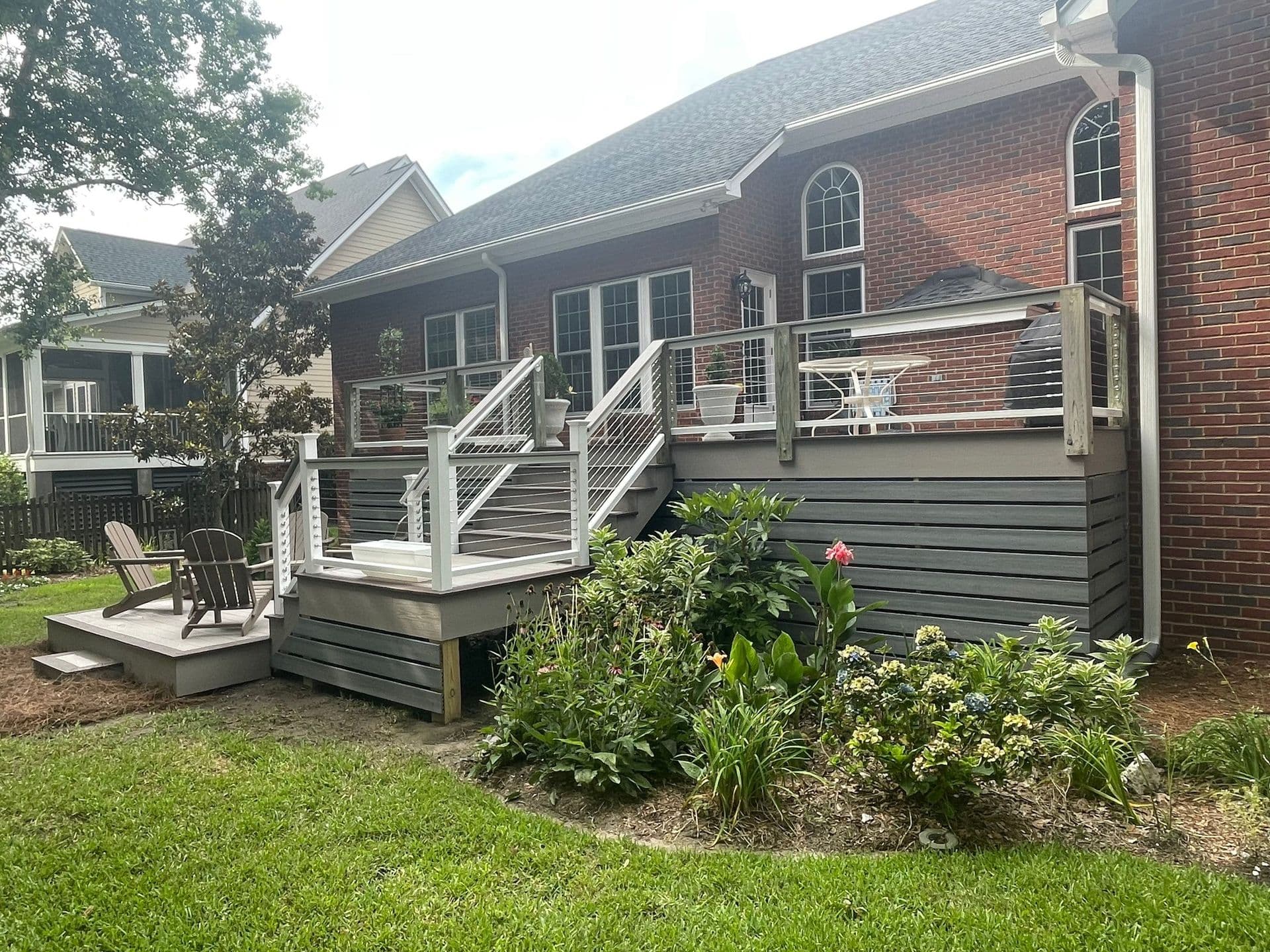Christmas Decorating: How Not To Kill Santa

Santa Claus has a tough job, no doubt about it. He has elves and reindeer to wrangle, cheer to spread, and an unthinkable caloric intake from all the cookies. As a Charleston roofer, we often think about his other obstacles, too. Walking around on a roof requires real caution. What if Santa tripped on a string of Christmas lights attached to a shingle?
He’d be saved by one of his reindeer, we’re certain, or maybe by his bag of gifts, which he’d then have to replace with orders from the Amazon.com drones. You, on the other hand, might not be so lucky.
While you try to make your home look as festive as possible this holiday season, we have a few tips to make sure you (and Santa) come out unharmed, merry, and full of good cheer.
Preparation
“An ounce of prevention is worth a pound of cure.”
I’m sure you’ve seen that cross-stitched and hanging on a wall somewhere, but it’s extra applicable when it comes to hanging Christmas lights.
First things first: look at the weather forecast. The best time to hang Christmas lights is on a relatively dry day. It helps if it’s not colder than average for the season, too, but wet weather is more dangerous. Cold weather is just more uncomfortable.
Climbing around on a ladder requires serious safety considerations, and it’s difficult to be 100% safe if conditions are wet. Christmas decorations are fun and charming, but your safety is much more important. Let’s be honest, you’re not fun or charming if you’re hurt
Additional preparation tips:
- Cords and Cables – Before you hang your lights, run your extension cords, install hooks, and install your hangers. You can do these on separate days, which helps if you need a little more time or a few more hooks. Keep all cord connections above ground, snow, and water. Only use outdoor extension cords that have a rating above or equal to the current your lights require.
- Check Your Lights – Before you go to all the trouble of hanging them up, check each string of lights to make sure they’re working properly. Just plug them in before you hang them and replace bulbs as necessary.
- Map Out Your Lights – Before you hang lights, especially on your roof, map out your home and the areas where you want to hang lights. Use graph paper if necessary, but measure every surface you want to light with a tape measure. Keep windows, doors, eaves, and bushes in mind as you map everything out.
- Check Your Outlet – Know where your outlets are and plan accordingly. Make sure you’re plugging your lights into GFCI, covered outlets.
- Avoid Power Lines – Don’t hang lights on any trees that even come close to touching a power line.
You probably already thought of this, too, but just in case: light strings with a male plug on one end and a female plug on the other end are much easier to work with, especially when the unexpected happens.
eBay has an excellent guide to light strings, and we agree with them when they say LED lights are by far the safest to use.
Planning does take some extra time in the beginning, but it saves you from being frustrated or hurting yourself, in the end.
Hanging Your Lights
Once you’ve done your homework and prep work, you’re ready to hang some lights. If you’re going a bit more advanced, Planet Christmas has a guide on wire frame lights.
Once you start hanging lights, your personal safety becomes much more important. You also want to maintain the integrity of your home and avoid damaging any of your Christmas lights on your trip up and down the ladder.
Focus your safety efforts around these tips:
Avoid Shingles – Avoid attaching Christmas lights directly to shingles. Don’t use nails, screws, or anything else that might harm your shingles or the integrity of your roof.
Use Clips – Christmas light clips come in all shapes and sizes. They can be used for almost any size eaves or for gutters of any thickness. Even though some Christmas light clips are meant for shingles, we strongly caution you against attaching any lights directly to shingles. Make sure your bulb sockets fit in your clip before you get up on a ladder. There are several brands of all-in-one clips that work with most bulbs.
Work Methodically – Attach your lights to their clips while you’re still on the ground. Take one string of lights up the ladder at a time, and make sure your lights don’t hit against the ladder or the side of your home. And, instead of leaning over, just climb down and move the ladder.
Ladder – The ladder itself is by far the most important part of your setup when it comes to safety. Place an extension ladder firmly on flat ground and make sure it extends above the eaves. Make sure it’s at an angle that’s not too steep or too flat– it should be comfortable to climb. Also, make sure the ground below the ladder contains no dangerous or sharp objects, or ice, just in case.
Shorter Runs – Use short strings of lights instead of long strings of lights. They’re much easier to work with, and they’re much easier to replace if there’s damage or any other problem. Long strings of lights won’t save you any time, generally.
As a Charleston roofer, we’ve seen the damage some homeowners do to their roof when they try to hang up Christmas lights, without a plan and the proper know-how. Damaging your roof is one thing, but damaging yourself is much worse. When it comes time to hang up lights and decorations, plan ahead and be safe. Santa will thank you for it!
Latest Home Owner Trends & Resources
A well-maintained deck isn’t just about curb appeal—it’s about safety, comfort, and increasing the value of your Summerville home. But when your outdoor space starts showing wear, how do you know if it’s time for a full replacement or...
Are you budgeting for a new deck installation at your South Carolina home? The weather in coastal areas can be brutal on your home’s outdoor surfaces...
Decks in Carolina Forest, SC, face more wear and tear than most. Between coastal humidity, salty air, and strong seasonal storms, outdoor structures in this area age quickly and sometimes unexpectedly...




